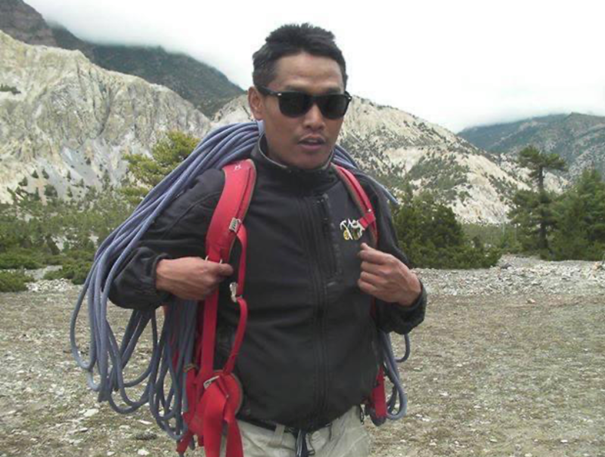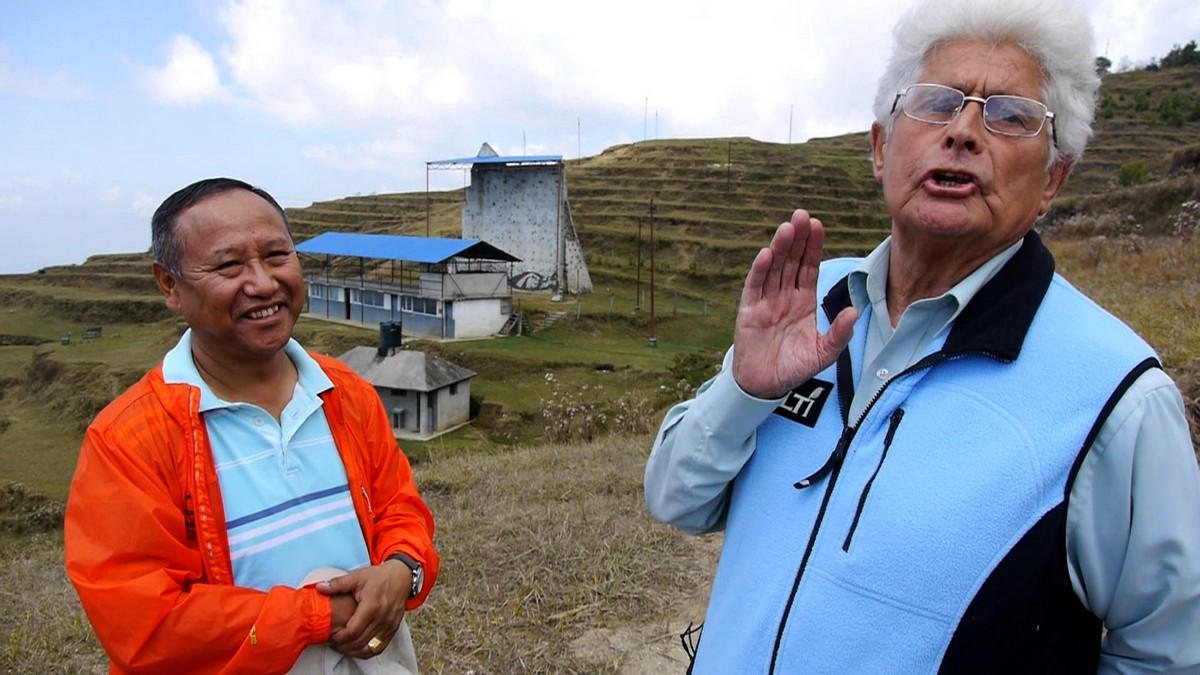They support us
Here are the 4 main personalities who support us in this project. But many other people support us, notably the local associations of Pangboche (Youth Club and Women’s Group) and the SPCC (Sagarmatha Pollution Control Committee) in Khumbu. We would like to thank all of them, because without them the project would not have existed.
Namgyal Zangbu Sherpa
Namgyal Zangbu is a Nepalese Sherpa. His father, Zimba Sherpa is the former president of the NMA (Nepal Mountaineering Association) and was an important actor in the raising of awareness about waste in Nepal.
Namgyal is our main contact there : he makes the link between our project, the reality of the ground and the expectations of the local population. He has largely proved his worth and his motivation during our first come to Nepal during the 2021 fall by guiding us to the right people in both Kathmandu and Khumbu.


Madindra Aryal
Madindra is a talented Nepalese engineer with whom we are developing the machines we will bring to the Khumbu, especially the plastic pyrolysis.
He is the real engineer-inventor. Far from the French design offices, he spends most of his days in his workshop tinkering with solutions to help Nepalese in need : solar panels of relief during the 2015 earthquake, respiratory assistants during the Covid…
We are very happy to work with such a professional and committed person.
Henri Sigayret
Henri is a Khumbu symbol. At the age of 40, he left his western life to settle in Pangboche at 4,000m above sea level where he founded a new family, financed electricity in his village and got involved in improving the living conditions of his new country of adoption, the Nepal.
He is also a renowned mountaineer, nicknamed Sherpasig, who made the first Annapurna ascent on skis (the second in France after Herzog…).
Henri died in July 2021, this project is partly dedicated to him and his achievements in Nepal.


Marion Chaygneaud-Dupuy
Based in Lhasa, Tibet, Marion coordinates projects with the Highland Initiatives association, which has supported more than 50 Himalayan projects since 2002, particularly in the field of preserving fragile mountain ecosystems.
The Clean Everest project in Tibet has been running since 2013. In 2018, it cleared 8.5 tonnes of waste from the North Face of Everest, then ended in 2020 with 10 tonnes collected. The environmental charter of the Clean Everest label serves as a reference for the Chinese authorities, who have been regulating the problem of waste pollution since the end of the major clean-up operation on the basis of this charter.
It’s an honour to be accompanied by Marion, who brings us her experience!
